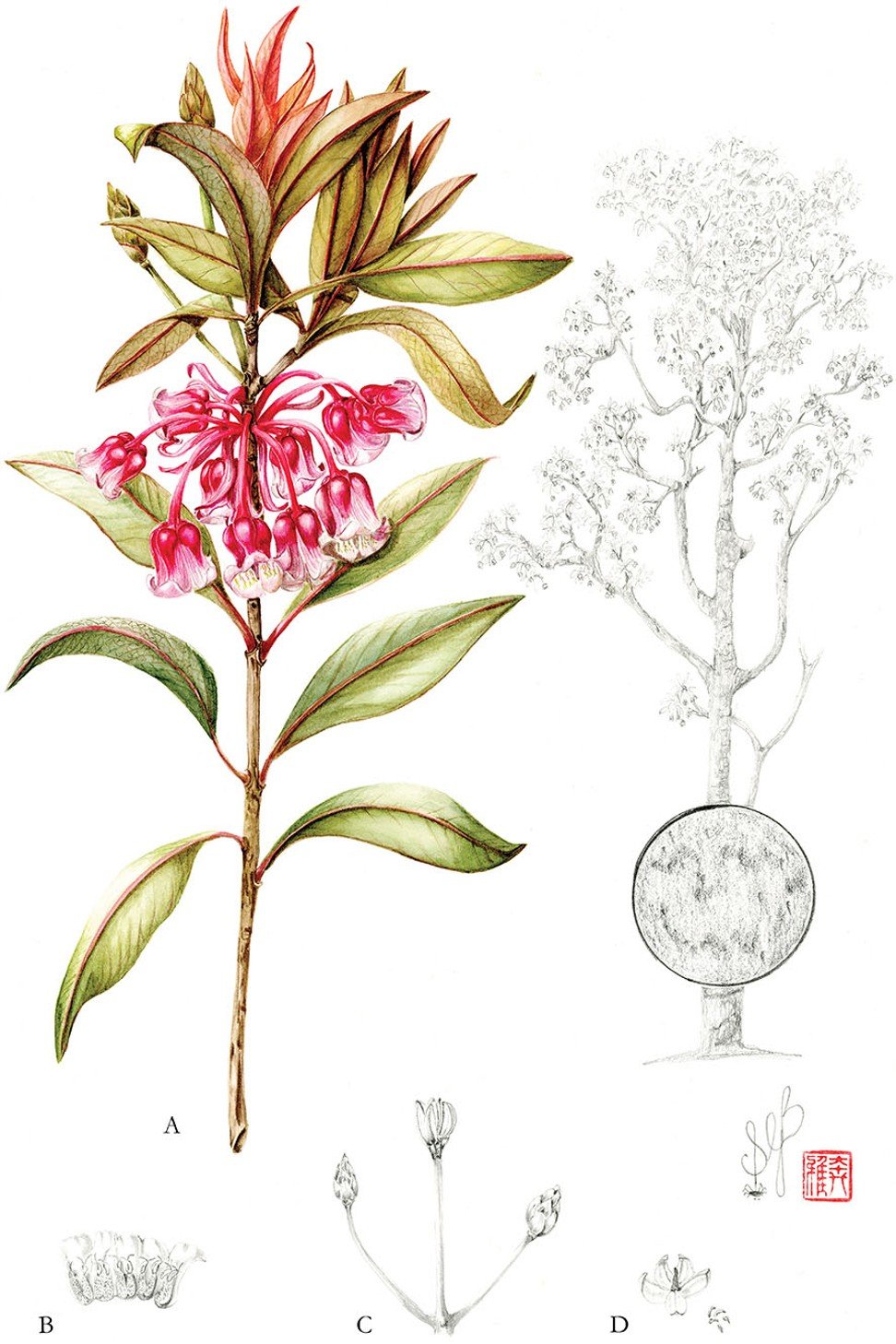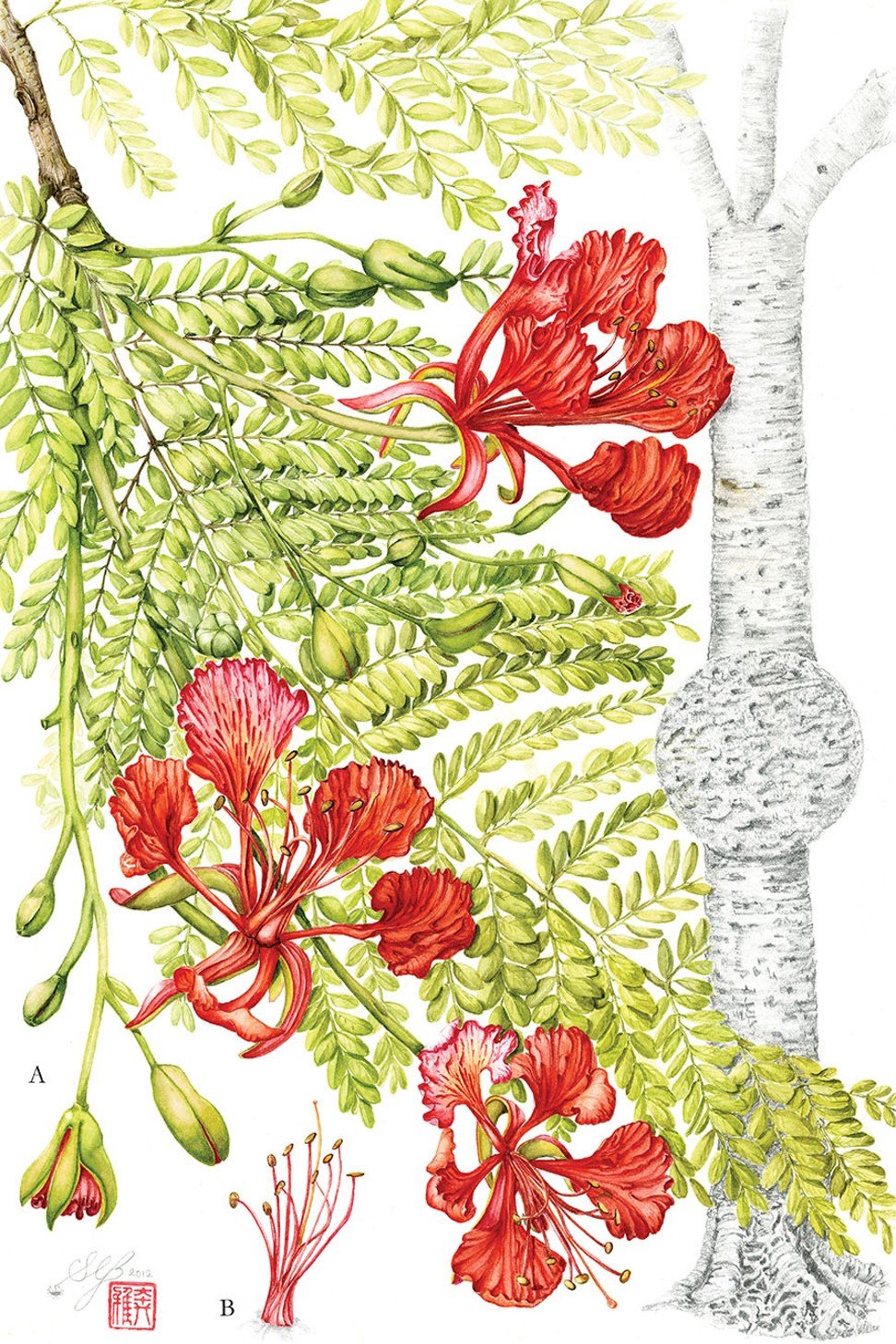
Beautiful watercolour plates of more than 100 Hong Kong trees a real labour of love
- Sally Grace Bunker spent up to six hours a day for 7½ years to complete this stunning book
- Her watercolour plates depict more than 100 trees in different stages of development
Portraits of Trees of Hong Kong and Southern China, by Sally Grace Bunker (illustrations), and Richard M.K. Saunders and Chun-Chiu Pang (text). Published by Earnshaw Books. 4/5 stars
Hong Kong-based British botanical artist Sally Grace Bunker has been painting the trees of Hong Kong for six hours a day during the past seven and a half years.
After exploring the city (including four hikes up Sunset Peak to capture the rare IIllicium angustisepalum or Lantau star-anise) for the better part of a decade, the result of Bunker’s labours is a stunning collection of more than 100 of Hong Kong’s most significant trees gathered in Portraits of Trees of Hong Kong and Southern China, which includes text by Richard M.K. Saunders and Pang Chun-Chiu.
Ten years ago, Bunker, who previously worked in education, wanted a career change and at the urging of a friend, she undertook a three-year course with the Society of Botanical Artists, which awarded her a distinction. Bunker wanted to work on a project focused on Hong Kong’s trees and teamed up with Saunders and Pang, who decided which of Hong Kong’s 390 indigenous trees to highlight in this book.


Bunker visited each tree three or four times during its various life stages, creating a remarkable collection of beautiful watercolours.
Each tree is given a double-page spread – a page for Bunker’s portrait and an accompanying scientific description on the opposing side. A combination of both art and science, the book is an ideal entry point for identifying and understanding more about Hong Kong’s trees.


Take the Bombax ceiba, for example, a cotton tree that, while not indigenous to Hong Kong, has been often used as an ornamental and lends its name to Cotton Tree Drive. Saunders and Pang take the reader through the tree’s characteristics – in this case its “distinctive architecture, with horizontal spreading branches and characteristic conical spines on the main trunk”.
Bunker includes a pencil drawing of the tree and then paints a flowering branch at different development stages as well as parts of the flower in detail.
The Bombax ceiba has a flower with three distinct types of stamens – Saunders and Pang write “the outermost stamens are basally fused into five clusters (each with six to 31 stamens) that alternate with the five petals. The inner stamens form a ring around the fused carpels and are of two lengths: five longer stamens, each with two large pollen sacs; and 10 shorter stamens, each with a single pollen sac” – and Bunker illustrates this in painstaking detail.



Hong Kong’s floral emblem, Bauhinia purpurea × variegata “Blakeana”, is also among the trees highlighted. Discovered by a French missionary in the late 19th century growing in the grounds of an abandoned house near Mount Davis, the tree is actually a sterile hybrid that relies on artificial propagation.
Along with Bunker’s vivid watercolours of the trees’ fruiting and flowering branches are black-and-white pencil sketches of the overall tree, as well as an enlarged drawing of its bark which Bunker based on direct bark rubbings.
In an interview, Bunker said that when walking through woodlands, a tree’s bark is often seen first drawing attention to it might help readers understand what to look for and to help them make an identification through a bark’s subtle colours, textures and patterns.




Hong Kong’s rich diversity of trees may come as a surprise to some, particularly because of the city’s dense population and the skyscrapers that form so many of its iconic images. But with an increasing number of people involved in Hong Kong’s green initiatives and the ever-growing popularity of Hong Kong trail running, environmental awareness seems to be at a high in the city.
But whether one is taken aback by their magnificence or whether one just wants to appreciate what they see on a lazy Sunday hike, Portraits of Trees of Hong Kong and Southern China offers a new way of looking at Hong Kong’s trees.
Bunker believes all that’s needed is to open one’s eyes. “Each tree has its own characteristics,” she said. “Just go up to a tree, have a really good look at it and you’ll find elements that are fascinating … They are wonders of nature.”
The paintings from Portraits of Trees of Hong Kong and Southern China will be exhibited at the University of Hong Kong’s GF Gallery, Run Run Shaw Tower, from April 30 to May 15
